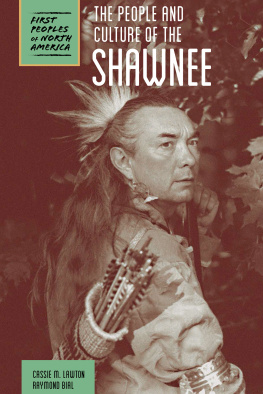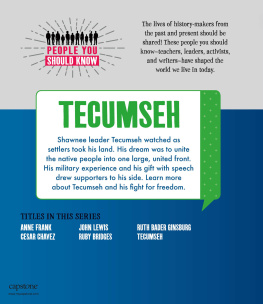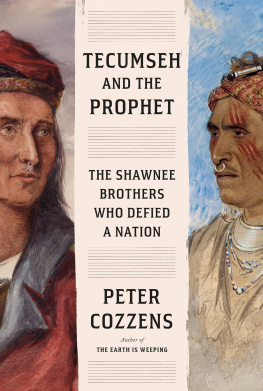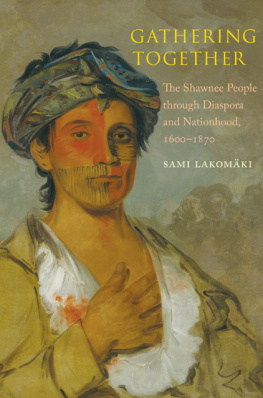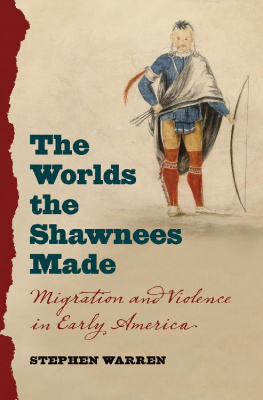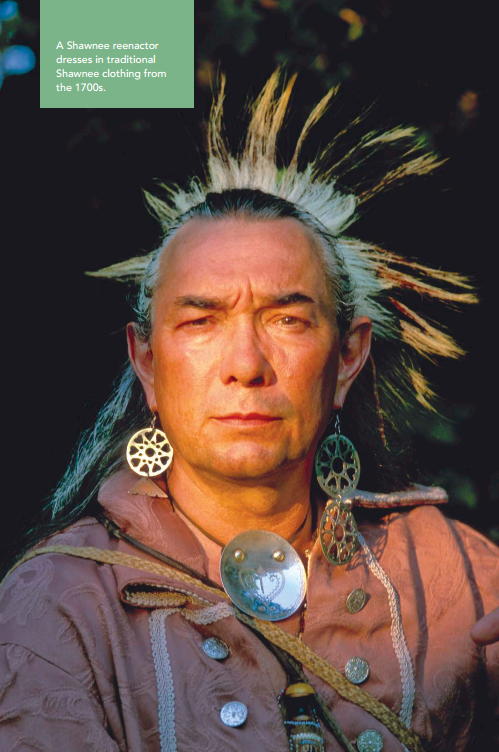Published in 2017 by Cavendish Square Publishing, LLC 243 5th Avenue, Suite 136, New York, NY 10016
Copyright 2017 by Cavendish Square Publishing, LLC First Edition
No part of this publication may be reproduced, stored in a retrieval system, or transmitted in any form or by any meanselectronic, mechanical, photocopying, recording, or otherwisewithout the prior permission of the copyright owner. Request for permission should be addressed to Permissions, Cavendish Square Publishing, 243 5th Avenue, Suite 136, New York, NY 10016. Tel (877) 980-4450; fax (877) 980-4454.
Website: cavendishsq.com
This publication represents the opinions and views of the author based on his or her personal experience, knowledge, and research. The information in this book serves as a general guide only. The author and publisher have used their best efforts in preparing this book and disclaim liability rising directly or indirectly from the use and application of this book.
CPSIA Compliance Information: Batch #CS16CSQ
All websites were available and accurate when this book was sent to press.
Library of Congress Cataloging-in-Publication Data Names: Lawton, Cassie M., author. | Bial, Raymond, author.
Title: The people and culture of the Shawnee / Cassie M. Lawton and Raymond Bial.
Description: Cavendish Square Publishing : New York, 2017. | Series: First peoples of North America | Includes bibliographical references and index. | Description based on print version record and CIP data provided by publisher; resource not viewed. Identifiers: LCCN 2015051400 (print) | LCCN 2015050256 (ebook) |
ISBN 9781502618931 (ebook) | ISBN 9781502618924 (library bound) Subjects: LCSH: Shawnee Indians--History--Juvenile literature. | Shawnee Indians--Social life and customs--Juvenile literature. Classification:
LCC E99.S35 (print) | LCC E99.S35 L39 2017 (ebook) | DDC 974.004/97317--dc23 LC record available at http://lccn.loc.gov/2015051400
Editorial Director: David McNamara Editor: Kristen Susienka Copy Editor: Rebecca Rohan Art Director: Jeffrey Talbot Designer: Amy Greenan Production Assistant: Karol Szymczuk Photo Research: J8 Media
The photographs in this book are used by permission and through the courtesy of: Marilyn Angel Wynn/ Nativestock/Getty Images, 6, 13, 40, 43, 46, 57, 61, 93; Raymond Bial, 8, 19, 28, 31, 49, 52, 86, 94; MPI/Getty Images, 10, 70, 111; Nikater, own work/File: Proclamation line of 1763 de.png/Wikimedia Commons, 17; North Wind Picture Archives, 26-27, 73, 80; Library of Congress, 32, 44, 75, 77, 99; NativeStock/North Wind Picture Archives, 34; Xasartha, own work/File: Flag of the Absentee Shawnee Tribe of Oklahoma.png/Wikimedia Commons, 35; Mashid Mohadjerin/Redux, 36; NativeStock.com, 38, 47, 54, 55, 96; Danita Delimont/Gallo Images/ Getty Images, 58; dominic sherony ( http://flickr.com/photos/9765210@N03)/File : White Hawk 12496239182.jpg/ Wikimedia Commons, 68; AP Photo/Albuquerque Journal, 88; Courtesy of Eastern Shawnee Tribe of Oklahoma,
90; Himasaram, self-made; ref. [1] ( http://shawnee-bluejacket.com/about_shawnee.htm)/File : Flag of The Shawnee Tribe of Oklahoma.svg/Wikimedia Commons, 91; AP Photo/Seth Perlman, 101; ErnestSpybuck1910.jpg: Mark Raymond Harrington/Original uploader was Taoboy49 at en.wikipedia/File: ErnestSpybuck1910edit.jpg/Wikimedia Commons, 106.
We would like to thank everyone involved in providing and locating photographs, as well as Cavendish Square Publishing for their dedication to publishing this book. As always, we would like to thank our families for their consistent support of our work.
The Shawnee Begin Developing A Culture A Vast Land European Encounters Influence of theIroquois Moving West Losing Land
How the Shawnee Lived How the ShawneeGoverned Shawnee Society
The Life Cycle Warring Fishing and Hunting Recipe Tending Crops and Gardens Jewelry andClothes Arts and Crafts A Thriving Culture
Our Grandmother Rituals Fun and Play Telling Stories Carrying on Traditions
The First Europeans Not Without a Fight Tecumsehs Influence Collapse of the Shawnee The Language of the Shawnee
Heading to Modernity Other Divisions TribalOrganizations
Thomas Wildcat Alford Big Jim Blue Jacket Barney Furman Bush Catahecassa Cornstalk Donald L. Fixico High Horn Paxinos Ernest Spybuck Tecumseh Tenskwatawa Glenna Wallace
At the dawn of the twentieth century, Native Americans were thought to be a vanishing race. However, despite four hundred years of warfare, deprivation, and disease, Native Americans have persevered. Countless thousands have lost their lives, but over the course of this century and the last, the populations of Native tribes have grown tremendously. Even as Americas First Peoples struggle to adapt to modern Western life, they have also kept the flame of their traditions alivethe languages, religions, stories, and the everyday ways of life. An exhilarating renaissance in Native American culture is now sweeping the continent from coast to coast.
The First Peoples of North America books depict the social and cultural life of the major nations, from the early history of Native peoples in North America to their present-day struggles for survival and dignity. Historical and contemporary photographs of traditional subjects, as well as period illustrations, are blended throughout each book so that readers may gain a sense of family life in a tipi, a hogan, or a longhouse.
No single book can comprehensively portray the intricate and varied lifeways of an entire tribe, or nation. We only hope that young people will come away with a deeper appreciation for the rich tapestry of Native American cultureboth then and nowand a keen desire to learn more about these first Americans.
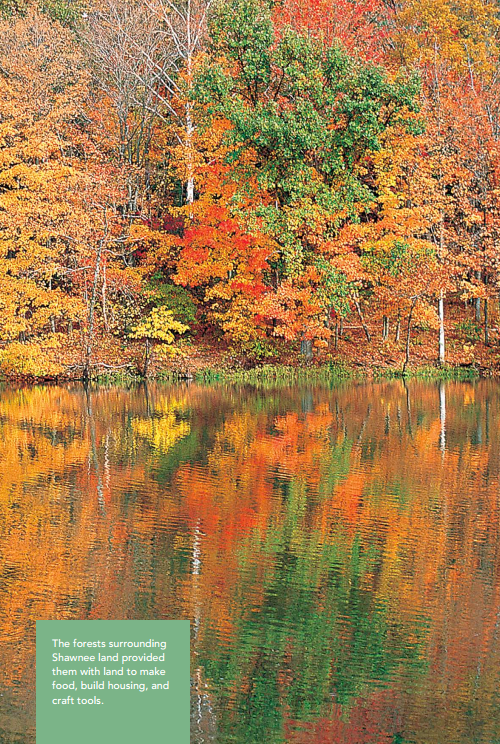

T he story of the First Peoples of North America began in Asia. Most historians believe that around ten thousand years ago, a natural land bridge formed over the Bering Strait, connecting Asia with Alaska.
Many of the humans living in Asia migrated during that time to North America. They traveled in family groups and eventually dispersed all over the North American continent. The groups were called tribes, or nations. Some of these groups became allies, while others fought bitterly for territory. The Shawnee (shaw-NEE) tribe was one group descended from the First Peoples of North America.
The Shawnee Begin
Never united as a single tribe, the loosely organized Shawnee were composed of various groups, usually referred to as divisions. In these scattered bands, they ranged as far east as the Susquehanna Valley in Pennsylvania, and as far south as Alabama. At times, they roved as far west as the Mississippi River and as far north as the Great Lakes. They were a mysterious people because they moved so often and ranged so widelycertainly more so than the other tribes that lived east of the Mississippi River. The Shawnee usually traveled to a new area, established a village, and lived there for a few months or sometimes for as long as a few years. Renowned as warriors, they were often invited to settle with other tribes with whom they had formed alliances. In exchange for helping to defend a village, they received a share of their allies' harvest and hunting. The Shawnee traded with the tribes found throughout their extensive territory. They exchanged pottery, corn, and other foods for minerals and feathers. The Shawnee also raided enemy camps and villages for

